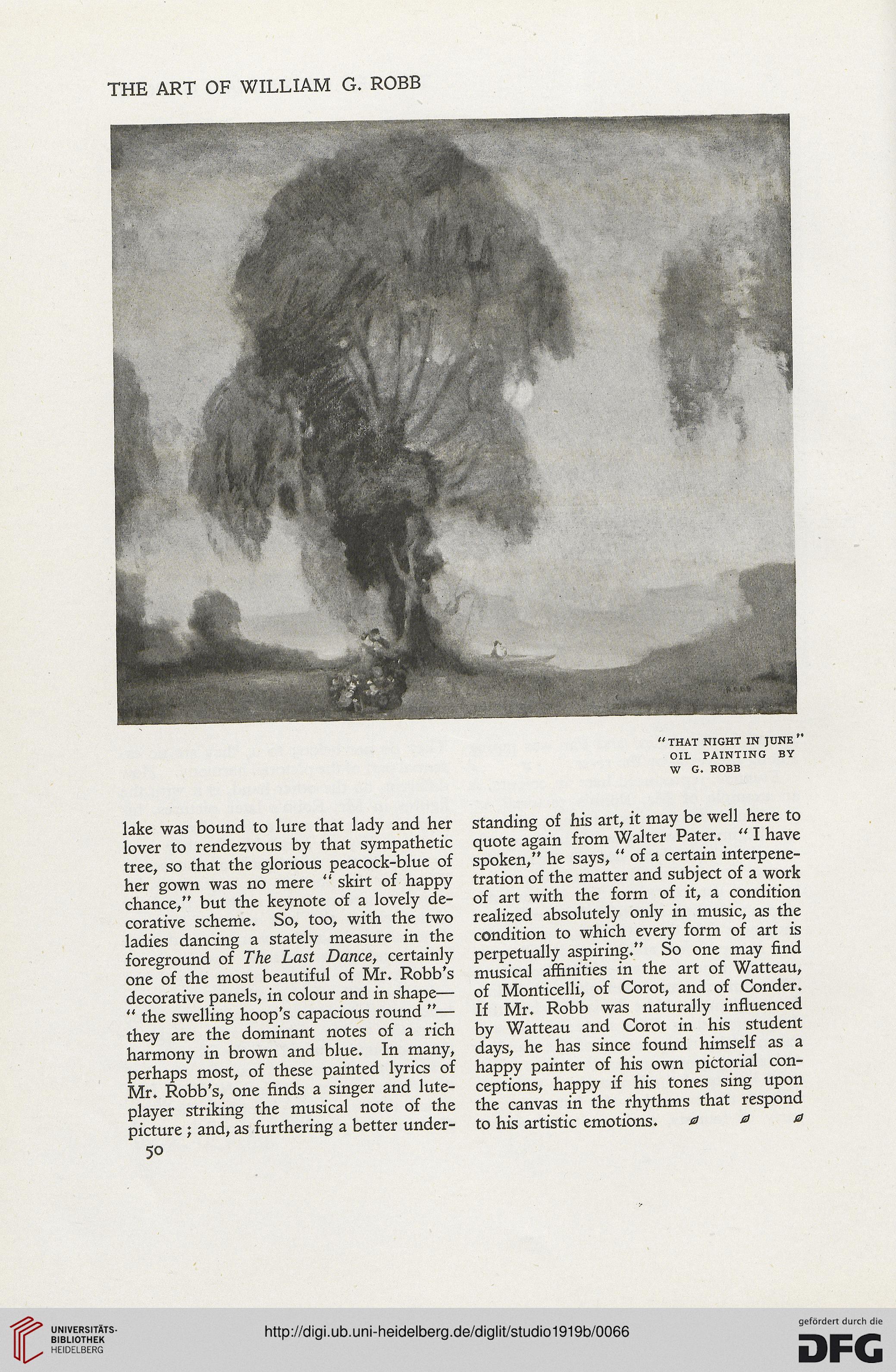THE ART OF WILLIAM G. ROBB
“ THAT NIGHT IN JUNE
OIL PAINTING BY
W G. KOBB
lake was bound to lure that lady and her
lover to rendezvous by that sympathetic
tree, so that the glorious peacock-blue of
her gown was no mere “ skirt of happy
chance,” but the keynote of a lovely de-
corative scheme. So, too, with the two
ladies dancing a stately measure in the
foreground of The Last Dance, certainly
one of the most beautiful of Mr. Robb’s
decorative panels, in colour and in shape—
“ the swelling hoop’s capacious round ”—
they are the dominant notes of a rich
harmony in brown and blue. In many,
perhaps most, of these painted lyrics of
Mr. Robb's, one finds a singer and lute-
player striking the musical note of the
picture ; and, as furthering a better under-
5°
standing of his art, it may be well here to
quote again from Walter Pater. " I have
spoken,” he says, “ of a certain interpene-
tration of the matter and subject of a work
of art with the form of it, a condition
realized absolutely only in music, as the
condition to which every form of art is
perpetually aspiring.” So one may find
musical affinities in the art of Watteau,
of Monticelli, of Corot, and of Conder.
If Mr. Robb was naturally influenced
by Watteau and Corot in his student
days, he has since found himself as a
happy painter of his own pictorial con-
ceptions, happy if his tones sing upon
the canvas in the rhythms that respond
to his artistic emotions. 000
“ THAT NIGHT IN JUNE
OIL PAINTING BY
W G. KOBB
lake was bound to lure that lady and her
lover to rendezvous by that sympathetic
tree, so that the glorious peacock-blue of
her gown was no mere “ skirt of happy
chance,” but the keynote of a lovely de-
corative scheme. So, too, with the two
ladies dancing a stately measure in the
foreground of The Last Dance, certainly
one of the most beautiful of Mr. Robb’s
decorative panels, in colour and in shape—
“ the swelling hoop’s capacious round ”—
they are the dominant notes of a rich
harmony in brown and blue. In many,
perhaps most, of these painted lyrics of
Mr. Robb's, one finds a singer and lute-
player striking the musical note of the
picture ; and, as furthering a better under-
5°
standing of his art, it may be well here to
quote again from Walter Pater. " I have
spoken,” he says, “ of a certain interpene-
tration of the matter and subject of a work
of art with the form of it, a condition
realized absolutely only in music, as the
condition to which every form of art is
perpetually aspiring.” So one may find
musical affinities in the art of Watteau,
of Monticelli, of Corot, and of Conder.
If Mr. Robb was naturally influenced
by Watteau and Corot in his student
days, he has since found himself as a
happy painter of his own pictorial con-
ceptions, happy if his tones sing upon
the canvas in the rhythms that respond
to his artistic emotions. 000




